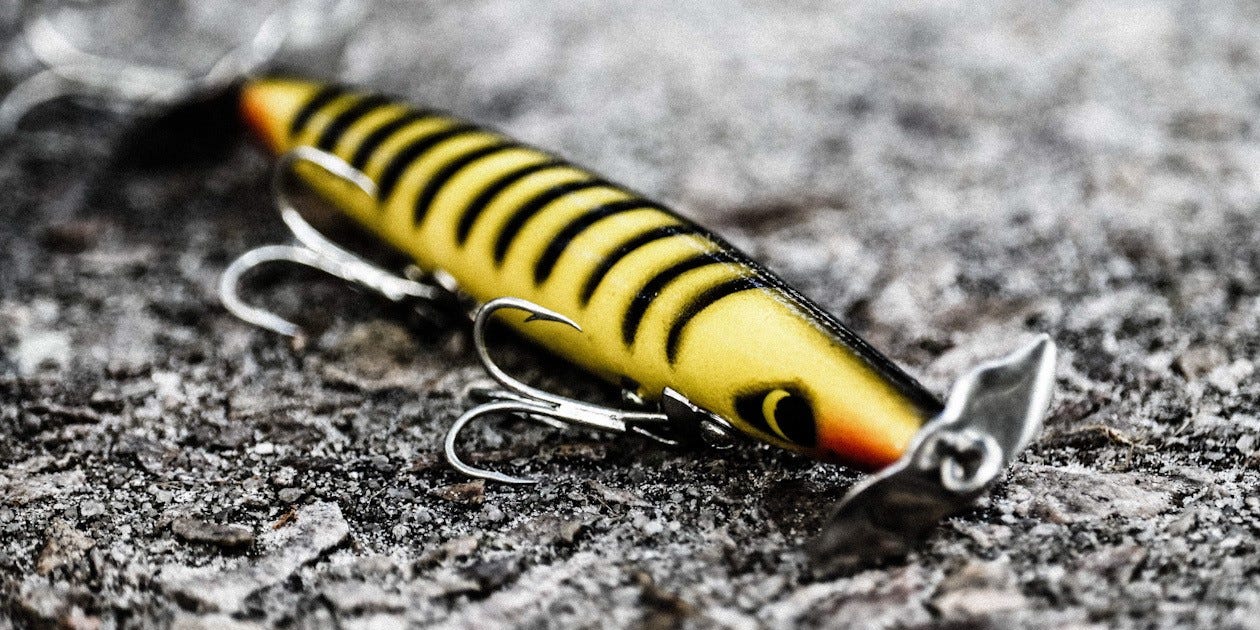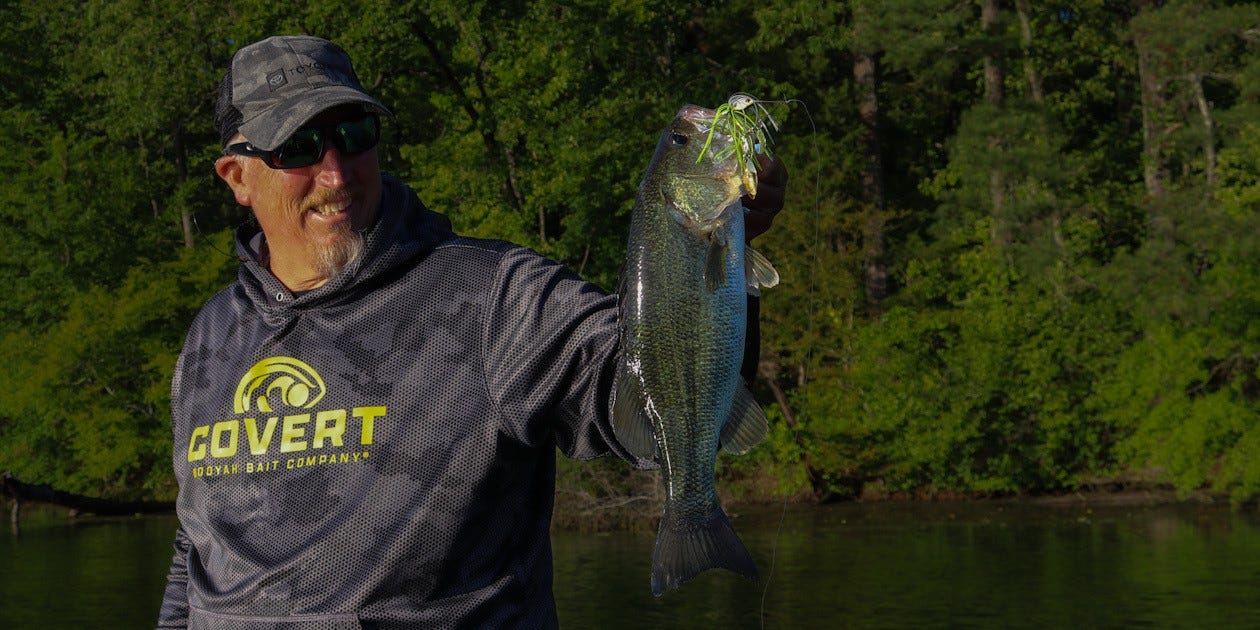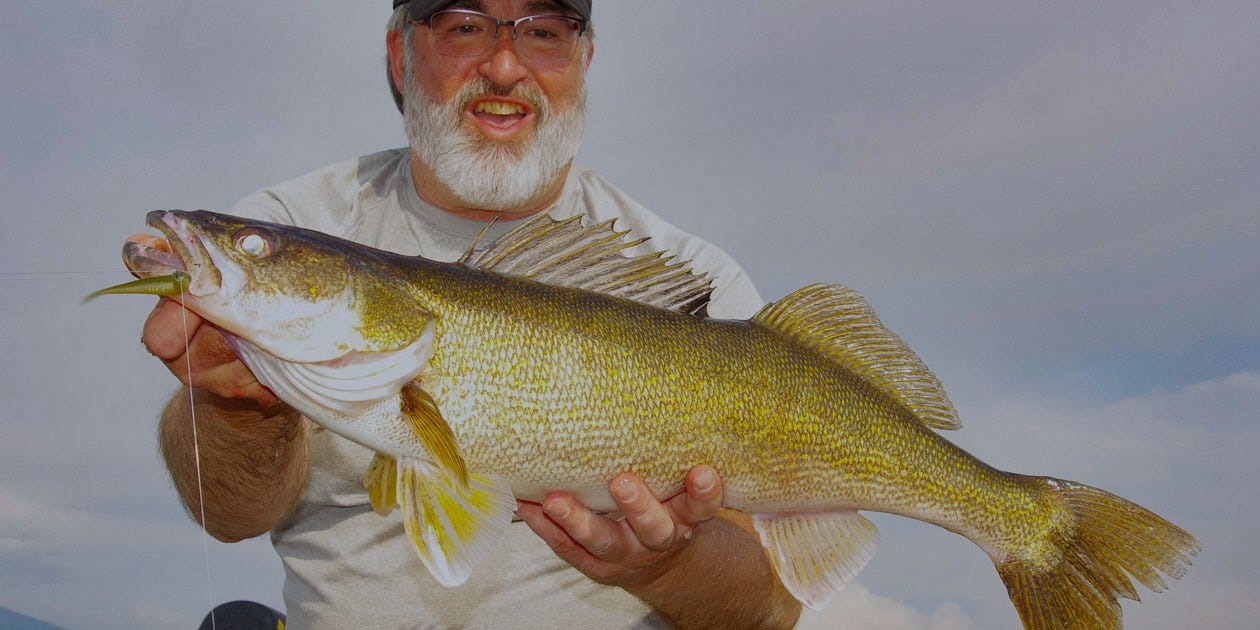- Nov 11, 2021
Rattl’n Quiver Spoon Combines Subtlety & Sound
This new spoon from Lindy Legendary Fishing fills an important spot in your ice fishing lures box. Learn why it was created and how to use it for everything from bluegills to walleyes.
At times, subtle action is critical for finding good ice fishing action. At other times sound is important for calling in fish and prompting strikes. Sometimes both are true, which is why Lindy introduced the Rattl’n Quiver Spoon.
The slow fluttery fall of a Lindy Quiver Spoon has made this lightweight ice spoon a multi-species ice fishing favorite for the past few winters. At times, though, the fish need a little help finding a bait before they can be coaxed into biting. The Rattl’n Quiver Spoon uses the same shape and light metal construction as the original Quiver Spoon. However, a rattle built into a protruding eye delivers the sound that is sometimes needed to call fish into range and finish the job of prompting strikes.
Tantalizing Drop
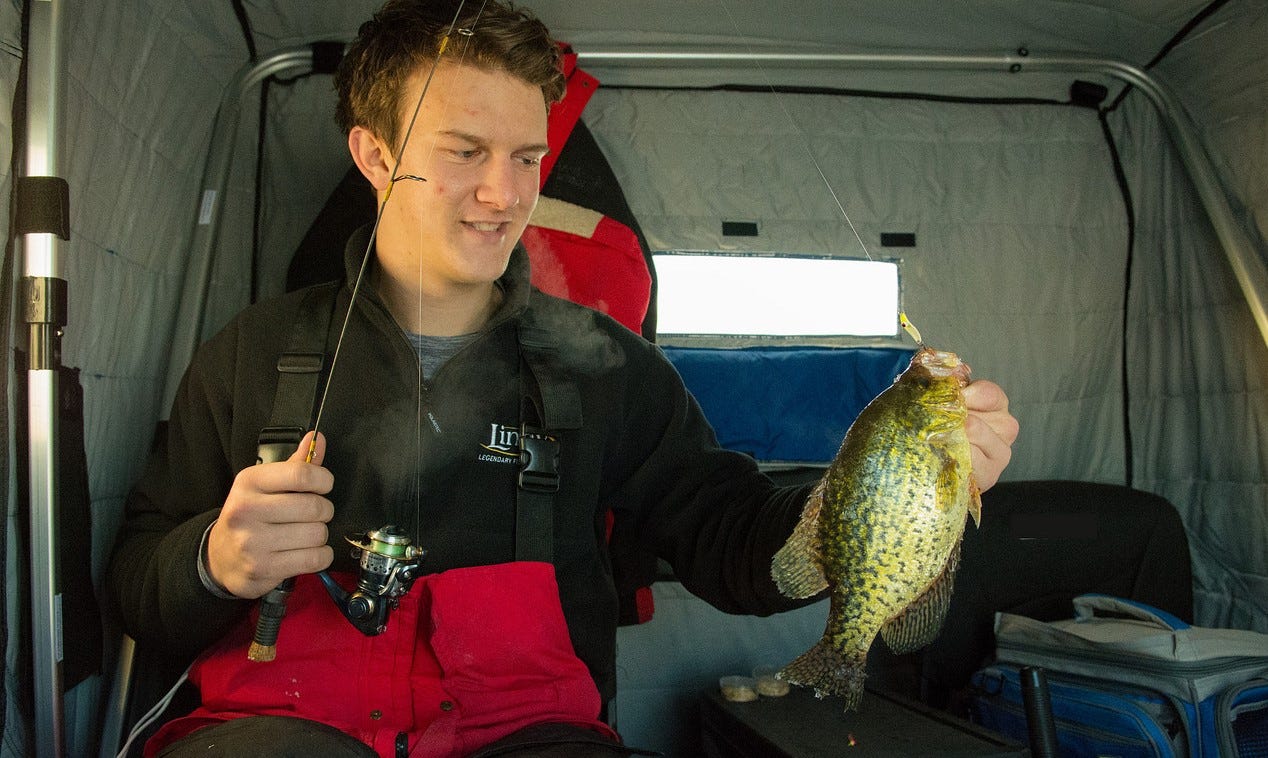

Quiver Spoons drop very slowly, rolling sideways and fluttering enticingly as they fall. Fish typically hit ice spoons on the fall, so a slower drop means more time with the lure in the strike zone following every jigging motion. That is critical at times, according to Jon Thelen, host of Fish Ed TV.
“The drop rate can be a very important factor at times and is something that is too often overlooked,” said Thelen, who was a big part of the development of the original Quiver Spoon and the Rattl’n Quiver Spoon. “When fish are really aggressive, it might not matter as much, but when they are more neutral, it can be critical.”
Because of the way the rattle was designed and its placement in a protruded eye, this spoon rattles rhythmically as it flutters down toward the bottom. Most rattling ice lures only send out sound when they are snapped upward, so adding that steady “click, click, click” throughout the lure’s fluttery fall is a valuable feature.
As a bonus, the rattle chamber creates 3D eye on both sides to add visual appeal and a defined target as the Rattl’n Quiver Spoon drops and even when it is suspended.
Like the original Quiver Spoon, Rattl’n Quiver Spoons are all metallic on the back side. That means they offer flash as they perform their slow, tantalizing dance. Color on one side and flash on the other creates what Thelen considers a “best of both worlds” scenario.
To Rattle or Not to Rattle
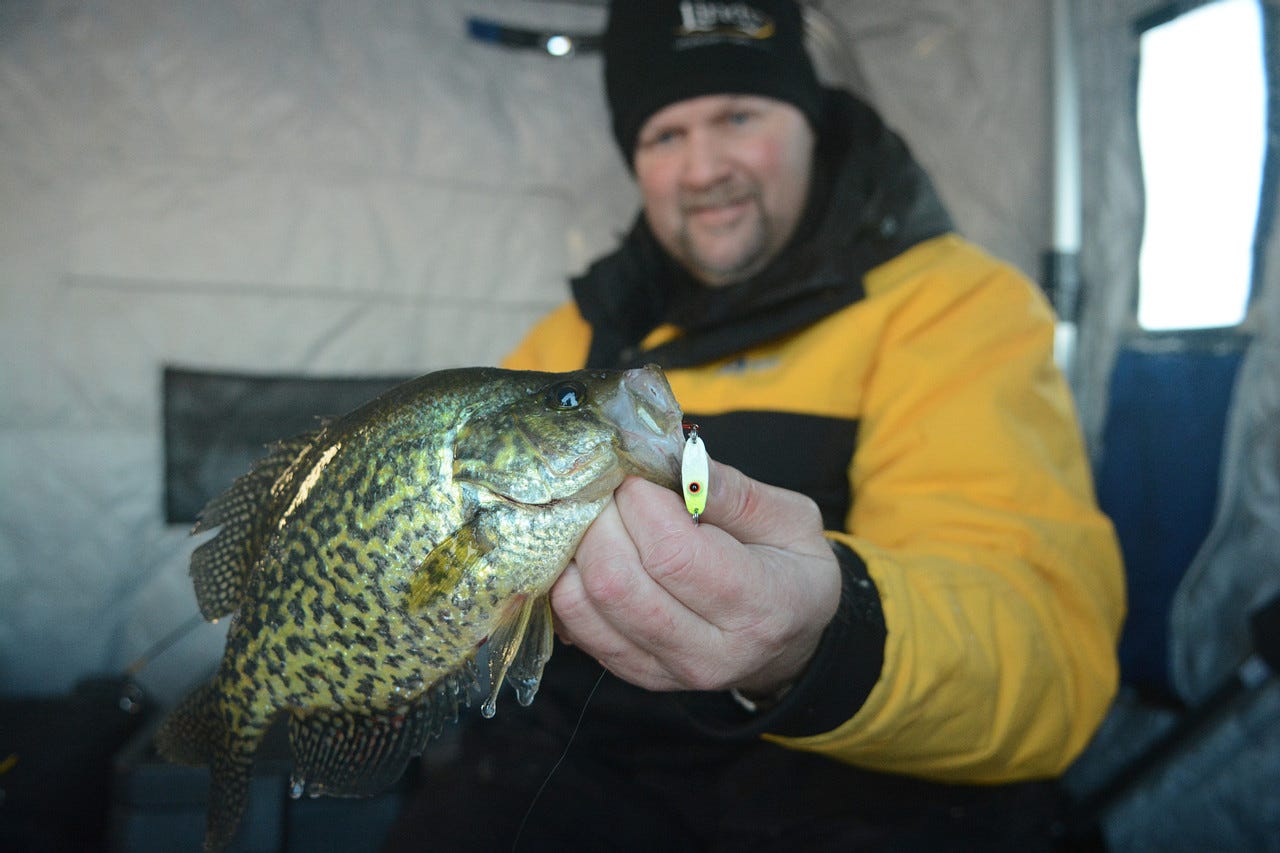

Although Thelen considers the Rattl’n Quiver Spoon a very important addition a valuable fish-catching tool for many situations, he stressed that it shouldn’t replace the original Quiver Spoon in any angler’s box of ice lures. Each has a place.
Both offer the same virtue of the slow fall, but the silent Quiver Spoon offers an added measure of subtlety, which can be important at times.
To Thelen, water color is the number one determining factor. For lakes that have dark or stained water, such as Minnesota’s Red Lake or Lake of the Woods, Thelen will almost always start with the Rattl’n Quiver Spoon because the sound will help fish find the lure. In clear lakes like Mille Lacs, where the Quiver Spoon has become an absolute favorite because of its subtlety, he is more likely to stick with the original because the fish have no trouble finding the lure and will sometimes get spooked by rattles.
Plenty of Options
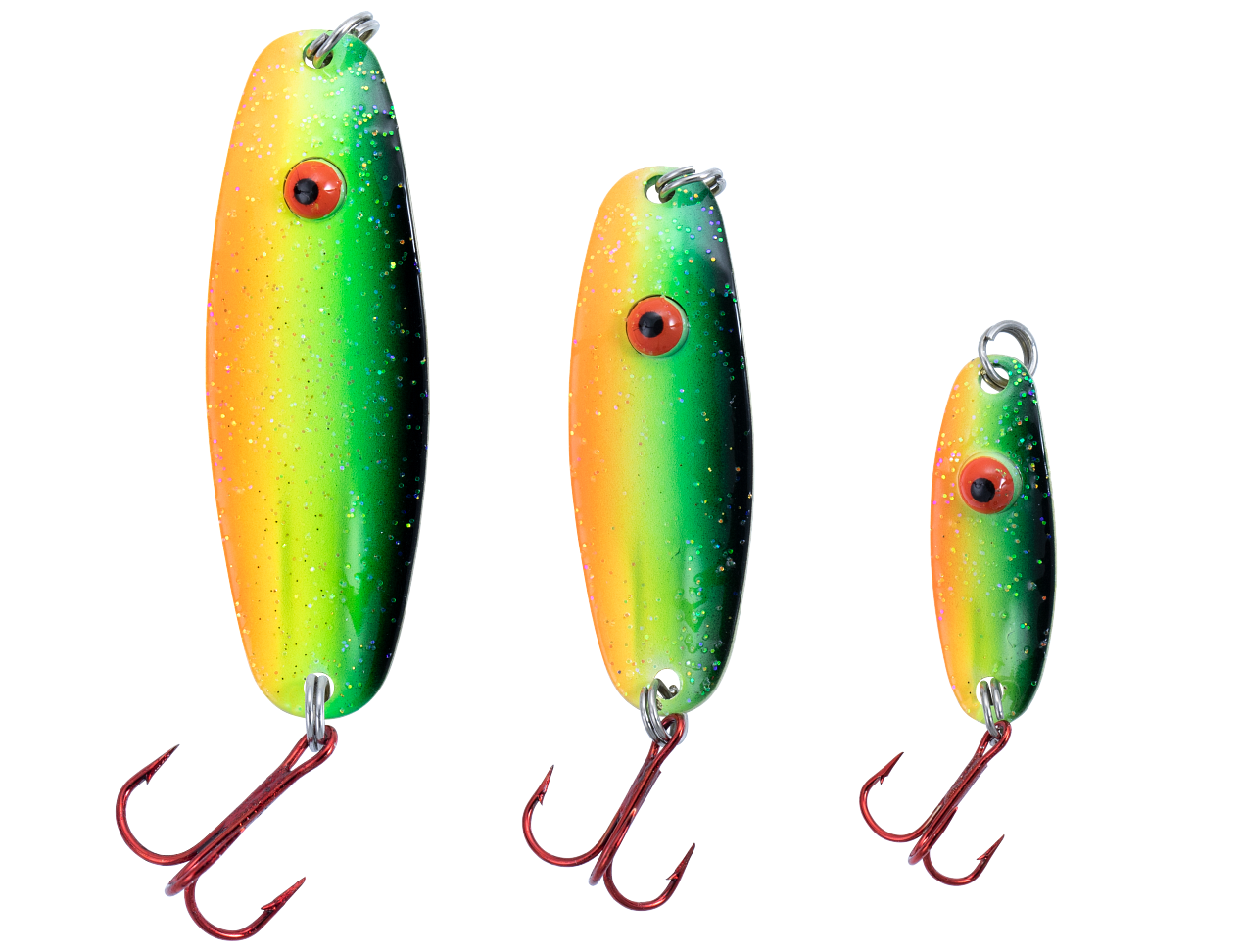

Like the original Quiver Spoon, the Rattl’n Quiver Spoon is available in three sizes, 1/4, 1/8 and 1/16-ounce. What that means from a practical standpoint is that whether you’re targeting bluegills, walleyes, pike or anything in-between, there’s a Rattl’n Quiver Spoon that’s well suited for the job.
“The slow fall and small size of the 1/16-ounce makes it a great spoon for panfish,” Thelen said.
The Rattl’n Quiver Spoon also comes in the same eight colors as the original Quiver Spoon, providing options that match forage, send out flash and attract with bright colors, plus several glow colors for when clouds or snow limit light penetration or for fishing at night.
All Rattl’n Quiver Spoons come equipped with a red treble hook to maximize attraction and prompt extra strikes.
Thelen noted that the Rattl’n Quiver Spoon is well suited for tipping with larvae or a minnow head.
A Rattl’n Quiver Spoon also can be fished many ways, with techniques range from subtle shaking to pronounced upward sweeps, and only the fish tell you how they want it any given day. That said, gently sweeping the bait and letting it fall provides the subtlety that best suits this lure and maximizes time that that the lure spends performing the rattling, quivering dance from which it gets its name.
Beyond Ice
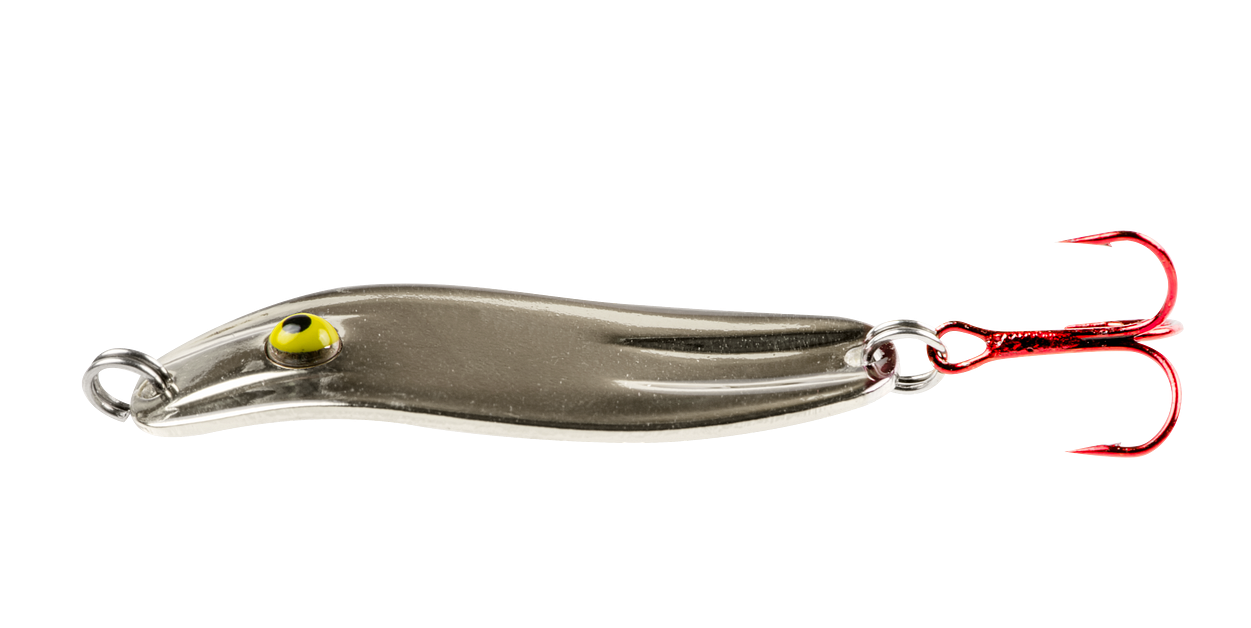

Although the Rattl’n Quiver Spoon was created for ice fishing and will mostly be used for the hard-water approach, it’s worth noting that the same attributes that make it so good for finicky fish through the ice make this an outstanding lure for vertical fishing in open water. That’s especially true during late fall and early spring, when fish are relating to bottom features and are a bit slow moving in the cold water. Use the same strategies and tip the bait the same way. Just use a longer rod and work from a boat!

